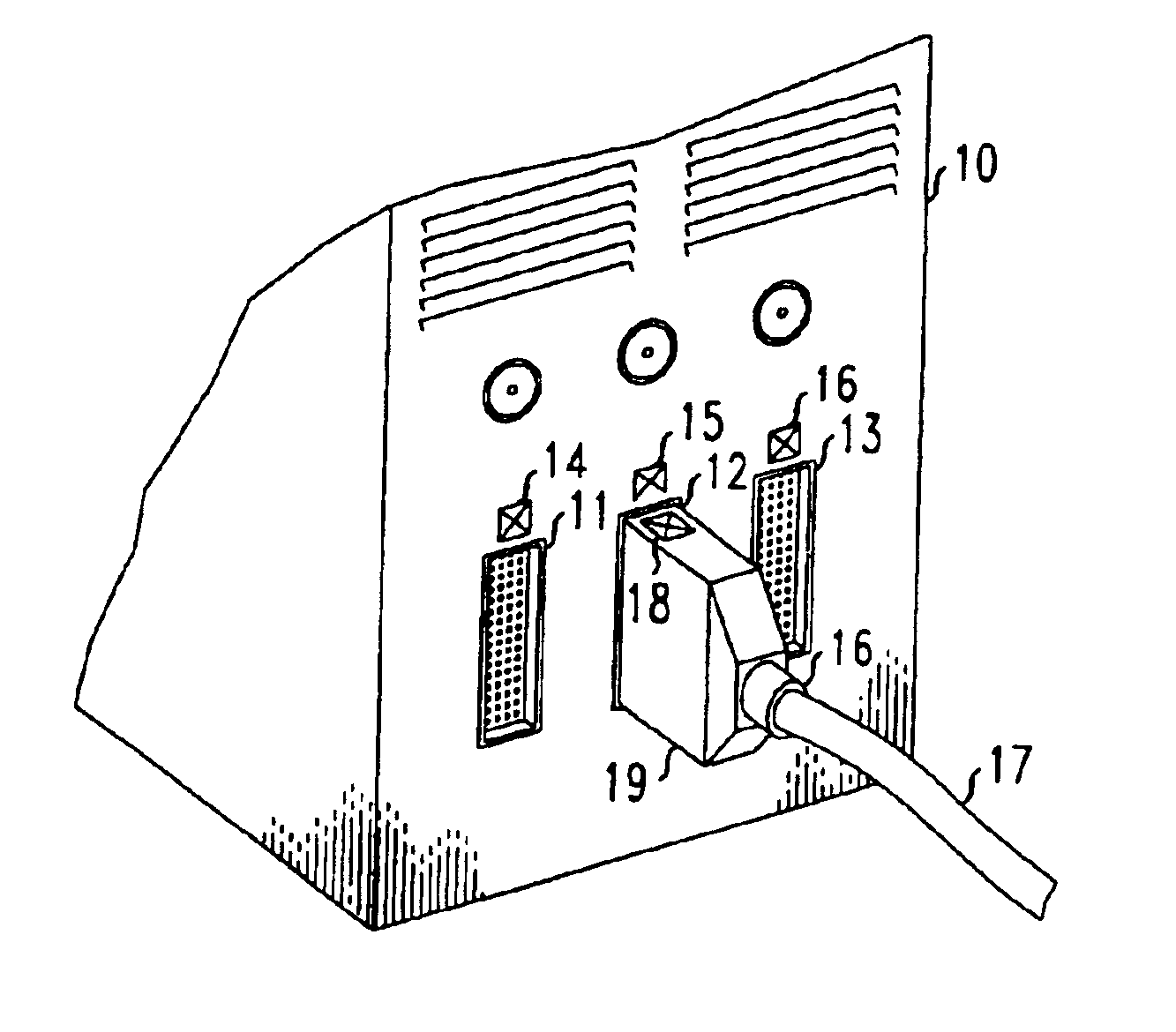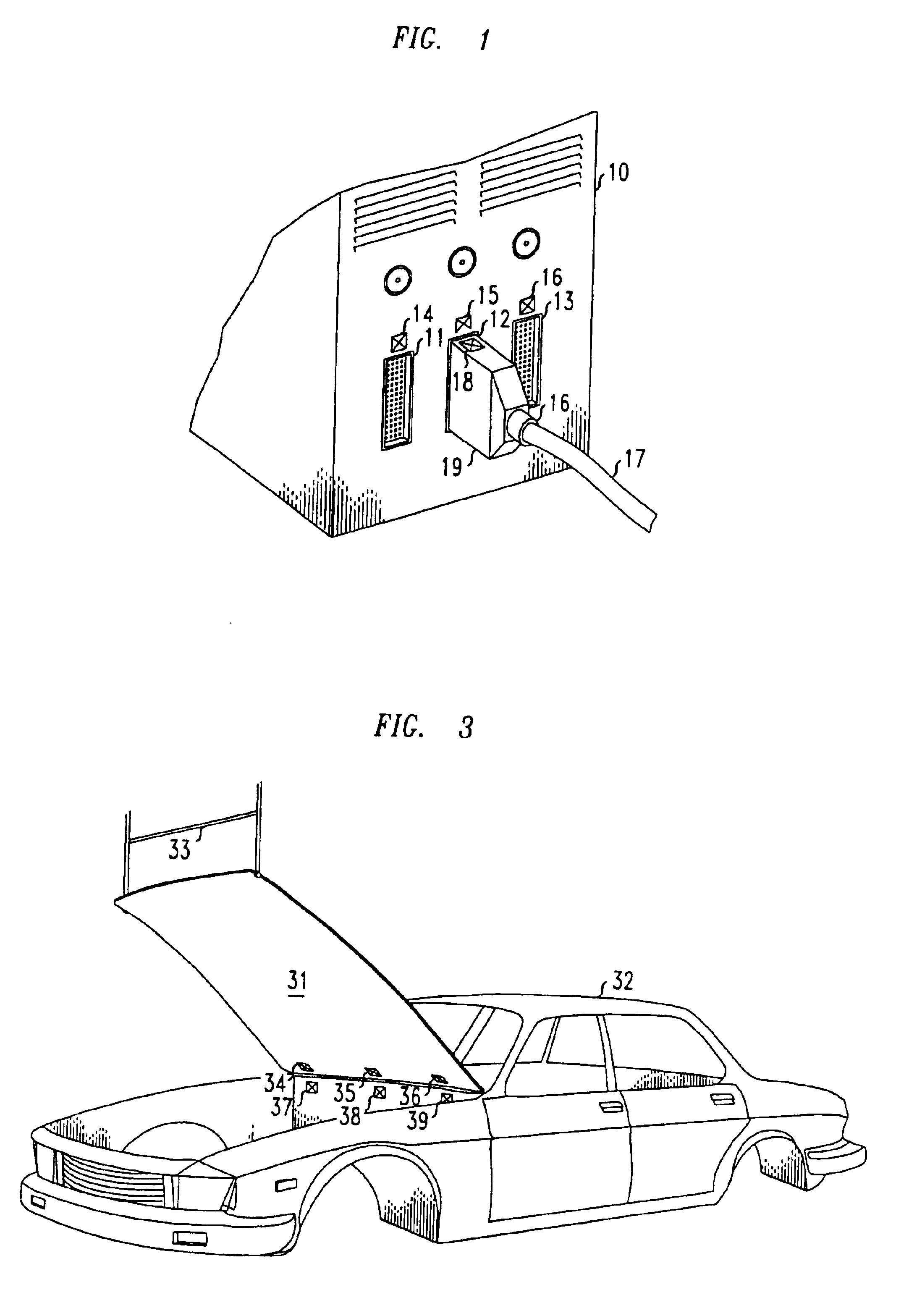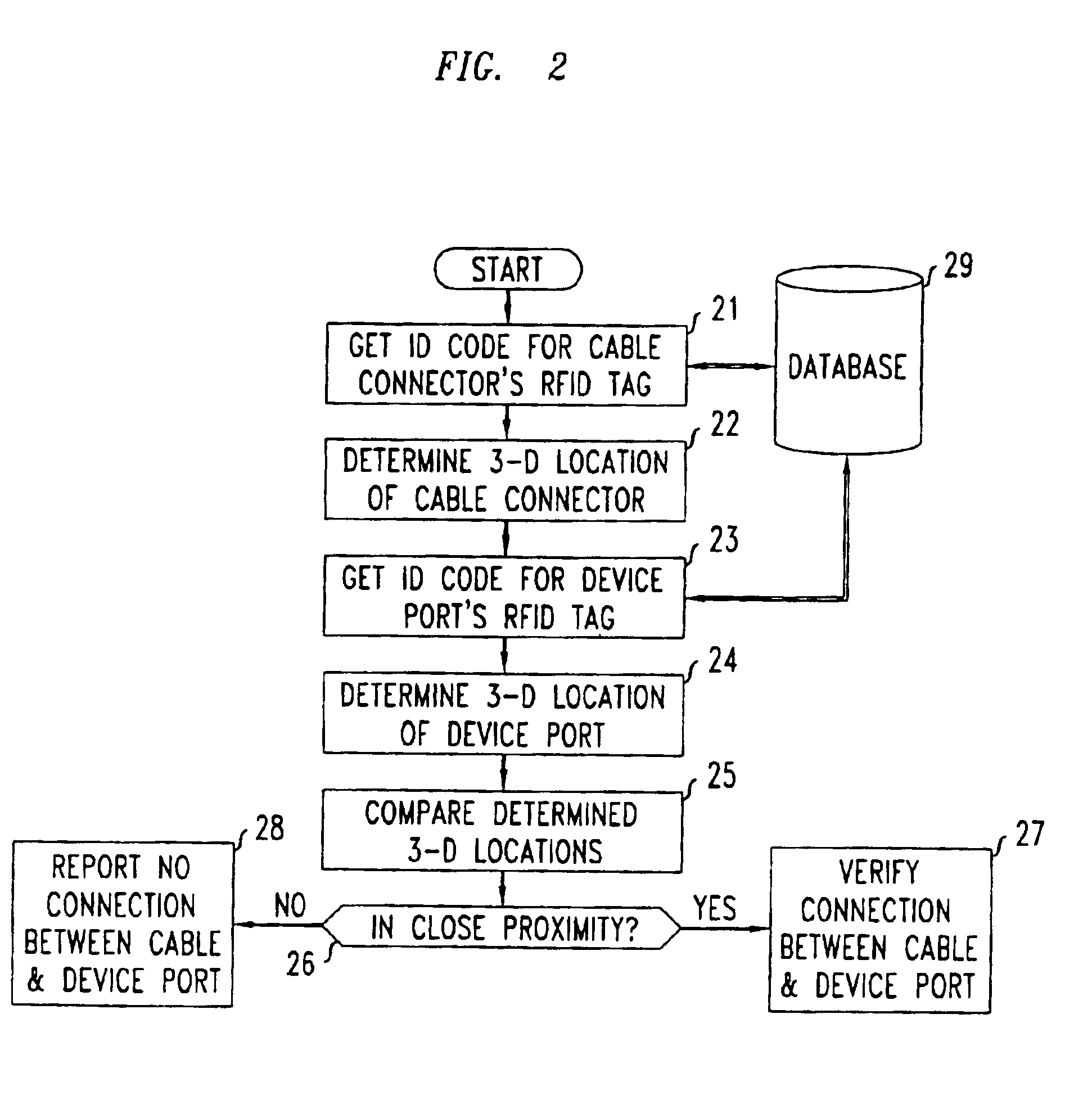Method for determining juxtaposition of physical components with use of RFID tags
a technology of physical components and juxtaposition, applied in the field of radio frequency identification systems, can solve the problems of inability to fix problems or provide new services, large amount of cost, incomplete, incorrect or ambiguous knowledge of a network,
- Summary
- Abstract
- Description
- Claims
- Application Information
AI Technical Summary
Benefits of technology
Problems solved by technology
Method used
Image
Examples
Embodiment Construction
A First Illustrative Embodiment of the Present Invention
FIG. 1 shows an illustrative cable and a piece of equipment, each with RFID tags attached thereto in accordance with a first illustrative embodiment of the present invention. The illustrated piece of equipment, device 10, has three device ports—device port 11, device port 12 and device port 13—each with a corresponding RFID tag—namely, tag 14, tag 15 and tag 16, respectively—attached to the faceplate of device 10 in very close proximity to the corresponding device ports. In addition, cable 17 has RFID tag 18 attached to cable connector 19 thereof. It will be obvious to those skilled in the RFID art that a number of high precision RFID sensors, which are not explicitly shown in the figure, will necessarily be located in the general vicinity of the components shown in the figure—such as, for example, on the walls of the room in which the components are located—in order to be able to accurately determine the locations of the vario...
PUM
 Login to View More
Login to View More Abstract
Description
Claims
Application Information
 Login to View More
Login to View More - R&D
- Intellectual Property
- Life Sciences
- Materials
- Tech Scout
- Unparalleled Data Quality
- Higher Quality Content
- 60% Fewer Hallucinations
Browse by: Latest US Patents, China's latest patents, Technical Efficacy Thesaurus, Application Domain, Technology Topic, Popular Technical Reports.
© 2025 PatSnap. All rights reserved.Legal|Privacy policy|Modern Slavery Act Transparency Statement|Sitemap|About US| Contact US: help@patsnap.com



